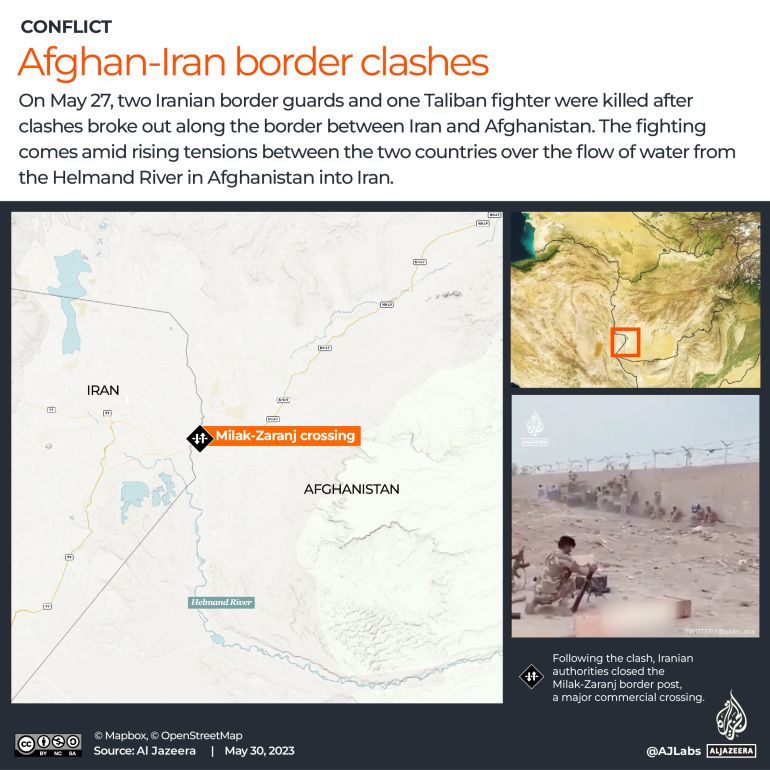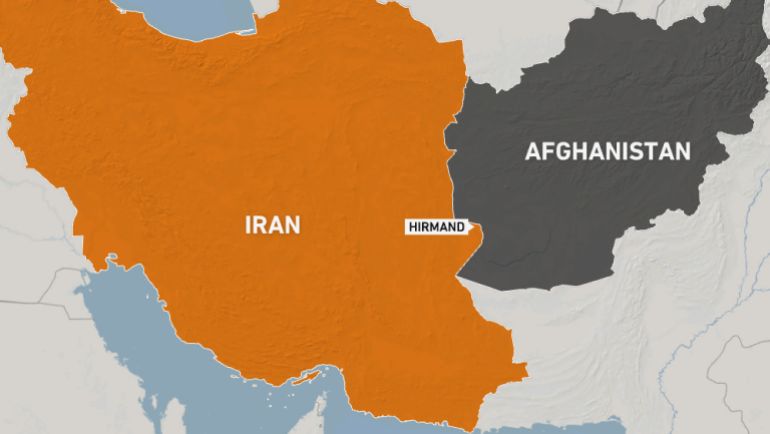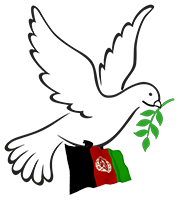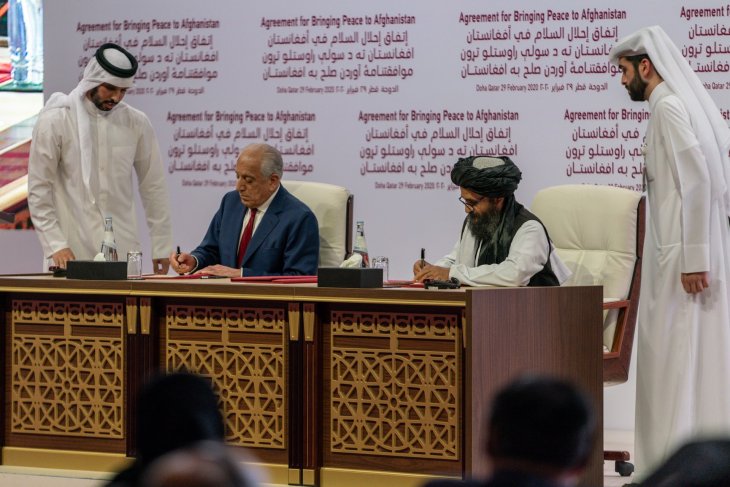Since their return to power in August 2021, the Taleban have enacted successive laws and orders which apply to women and girls, but not to men and boys. Earlier this month, United Nations experts reported their assessment that these measures violated women and girls’ rights to education, work, freedom of movement, health, bodily autonomy and decision-making, peaceful assembly and association, and access to justice and amounted to ‘gender persecution’. One of the experts has also asked the International Criminal Court to consider whether the crime against humanity of gender persecution was taking place in Afghanistan. In this Q&A, Ehsan Qaane* unpacks the term as it exists in international law, and in that light, analyses whether the court might consider Taleban restrictions on women as amounting to gender prosecution and whether an investigation could lie within its mandate.
Introduction
Since the Taleban regained power in Afghanistan in August 2021, they have imposed multiple orders and regulations on Afghan women and girls that do not apply to men and boys. Two United Nations independent experts, Special Rapporteur on the Situation of Human Rights in Afghanistan Richard Bennet and Chair of the Working Group on Discrimination against Women and Girls Dorothy Estrada-Tanck, have concluded that these restrictions, which they say are “violating girls’ and women’s rights to education, work, freedom of movement, health, bodily autonomy and decision-making, freedom of peaceful assembly and association, and access to justice,” amount to “gender persecution.” In a statement, published on 5 May 2023 at the end of an eight-day joint visit to Afghanistan, they also shared their concerns that these measures have:
…decimated the system of protection and support for those fleeing domestic violence, leaving women and girls with absolutely no recourse. They have imposed extreme modesty rules and detained women and girls for alleged “moral crimes”. These measures have reportedly contributed to a surge in the rates of child and forced marriage, as well as the proliferation of gender-based violence perpetrated with impunity. We are also particularly concerned by the fact that women who peacefully protest against these oppressive measures encounter threats, harassment, arbitrary detentions and torture…. We are alarmed about widespread mental health issues and accounts of escalating suicides among women and girls.
Earlier, Bennett asked the Prosecutor of the International Criminal Court (ICC), whose office has been looking into war crimes and crimes against humanity in Afghanistan since 2006, to consider whether the “crime of gender persecution” was taking place there (see Bennett’s report to the UN Human Rights Council, published on 6 February 2023, and AAN’s analysis of it.)
This report first unpacks the legal basis for the experts’ use of the term ‘gender persecution’, before delving into whether and on what grounds the ICC could prosecute the Taleban for allegedly perpetrating it.
1. What is gender persecution?
‘Gender persecution’, as a crime against humanity, was first criminalised by the Rome Statute, the treaty that established the International Criminal Court (ICC) and which was adopted in 1998 and came into force in 2002. The term refers to “any crime within the jurisdiction” of the ICC perpetrated on the basis of the gender of the affected individual or individuals. The crimes falling under ICC jurisdiction are genocide, crimes against humanity, war crimes and the crime of aggression (see articles 5 to 8 of the Rome Statute). Furthermore, article 7 outlaws the “persecution against any identifiable group or collectivity on political, racial, national, ethnic, cultural, religious, gender as defined in paragraph 3, or other grounds that are universally recognized as impermissible under international law” (article 7(1)(h)) and ‘persecution’ as the “intentional and severe deprivation of fundamental rights contrary to international law by reason of the identity of the group or collectivity” (article 7(2)(g)).
An act, considered a crime within ICC jurisdiction and which violated the fundamental rights of women and girls as a collectivity, could therefore amount to gender persecution if it reached ICC thresholds: the act or acts would need to be “systematic or widespread,” “intentional” and involve the “severe deprivation of fundamental rights contrary to international law.”
Some of the criminal acts under ICC jurisdiction and considered crimes against humanity when “committed as part of a widespread or systematic attack directed against any civilian population, with knowledge of the attack” are listed in paragraph (1) of article 7 of the Rome Statute:
[M]urder; extermination, enslavement; deportation or forcible transfer of population; imprisonment or other severe deprivation of physical liberty in violation of fundamental rules of international law; torture; rape, sexual slavery, enforced prostitution, forced pregnancy, enforced sterilisation, or any other form of sexual violence of comparable gravity; enforced disappearance of persons; the crime of apartheid; other inhumane acts of similar character intentionally causing great suffering, or serious injury to body or to mental or physical health.
There is one ongoing case in front of the ICC, which includes some of the acts listed above. The Malian, Al-Hassan Ag Abdoul Aziz, is standing trial for various war crimes and the crimes against humanity of torture, rape, sexual slavery and other inhumane acts, including, inter alia, forced marriages and persecution. It is alleged he perpetrated these acts as a member of the armed group, Ansar Eddine, and the “de facto chief of Islamic police” at a time when the city of Timbuktu fell under the control of his group and al-Qaeda in the Islamic Maghreb, in 2012 and 2013 (see ICC notes on the case here). The trial has been described as ‘ground-breaking’, for example by The Guardian when it was launched in 2018, because it was the first to go to ICC trial with charges that included “the crime of persecution on the grounds of gender.” The judges of the ICC are currently deliberating their verdict.
Any case against the Taleban would be somewhat different, centring on their alleged deprivation of fundamental rights of women and girls. This term is not defined in the Rome Statute, but examples of these rights have now been listed in a new policy on the crime of gender persecution published by the ICC’s Office of the Prosecutor in December 2022 (paragraph 24):
[T]he right: to life; to be free from torture or other inhumane or degrading treatment or punishments; to be free from slavery or the slave trade, servitude and retroactive application of penal law; to freedom of assembly, opinion, expression, movement and religion, including the right to be free from religion; rights to equality, dignity, bodily integrity, family, privacy, security, education, employment, property, political or cultural participation, to access to justice or health care. Human rights violations can constitute a severe deprivation of fundamental rights on their own or when considered cumulatively.
The phrase ‘fundamental rights’ and the Office of the Prosecutor’s explanation of what this term means has expanded the scope of gender persecution beyond the acts mentioned in articles 6, 7 and 8 of the Rome Statute to violations of social, political, economic and civil rights. These are preserved in international human rights documents like the Universal Declaration of Human Rights, Convention on the Elimination of All Forms of Discrimination against Women (CEDAW) and other human rights conventions. However, to be addressed by the ICC, the violations must pass the court’s high thresholds of being “systematic or widespread,” “intentional” and involving the “severe deprivation of fundamental rights contrary to international law by reason” of gender.
The Office of the Prosecutor’s policy says that gender persecution could be “enforced by means of violence or destruction, or occur via the imposition of regulations,” and significantly, that it cannot be “ignored, dismissed or justified on the basis of culture.” Under international law, crimes against humanity are jus cogens, ie the principles which form the norms of international law that cannot be set aside or made ‘legal’ through domestic legislation. Another example would be torture, which is also illegal in all circumstances.
Whether this new policy was brought in because of the Islamic Emirate’s restrictions on women and girls and the need to address them is not known. However, it does represent a major development in the understanding of the law.
2. Is there a legal formula for analysing whether the Taleban’s policy on Afghan women and girls amounts to gender persecution?
To argue whether the Taleban’s discriminatory bans against Afghan women and girls amount to the crime against humanity of persecution on the basis of gender or not, Taleban policy must be assessed in accordance with article 7 of the Rome Statute and other relevant documents like the Office of the Prosecutor’s “Policy on the Crime of Gender Persecution” and the ICC’s “Elements of Crimes”. The formula these documents provide is that the crimes must be:
- intentional (referred to as the ‘mental element’);
- involve the severe deprivation of fundamental rights contrary to international law on the basis of gender (the ‘actual element’) and are;
- carried out in a systematic or widespread manner (the ‘contextual element’).
This paper uses this formula to analyse whether the Taleban have intentionally, systematically and in a widespread manner deprived Afghan women and girls of their fundamental rights to employment and political participation because of their gender.
The choice to scrutinise these rights complements another recent report which examined the Taleban’s alleged deprivation of Afghan women and girls’ rights to education, freedom of movement and assembly. That analysis, by professor of law and special advisor on gender persecution to the Office of the Prosecutor, Lisa Davis, used a somewhat different method of legal argument and was published by the City University of New York (CUNY) School of Law in March 2023.
3. What does international law say about the right to work and to political participation?
Political participation as a fundamental right, including specifically for women, has been secured in several international human rights instruments, including the Universal Declaration of Human Rights, the Convention on the Political Rights of Women, the International Covenant on Civil and Political Rights, and, more importantly, the Convention on the Elimination of All Forms of Discrimination against Women (CEDAW) of which Afghanistan is a signatory. For example, article 7 of CEDAW declares:
States Parties shall take all appropriate measures to eliminate discrimination against women in the political and public life of the country and, in particular, shall ensure to women, on equal terms with men, the right: (a) To vote in all elections and public referenda and to be eligible for election to all publicly elected bodies; (b) To participate in the formulation of government policy and the implementation thereof and to hold public office and perform all public functions at all levels of government; (c) To participate in non-governmental organizations and associations concerned with the public and political life of the country.
Additionally, article 8 of CEDAW obliges states to ensure women have “the opportunity to represent their government at the international level and to participate in the work of international organisations,” like the UN.
Article 11 of CEDAW defines the right to work as the ‘inalienable right of all human beings.” It obliges states to “eliminate discrimination against women in the field of employment” and to provide, among many other rights, equal opportunities and benefits for women and men.
Violating rights mentioned in these paragraphs could amount to the crime against humanity of gender persecution if they fit the formula mentioned earlier.
Analysis of Taleban policy vis-à-vis Afghan women’s political participation and their access to work
a. The actual element: Have women been severely deprived of their fundamental rights to political participation and work, contrary to international law
The Taleban’s Islamic Emirate consists of one executive and one judicial body. It has no independent legislative branch (the Taleban formally dissolved Afghanistan parliament on 17 May 2022). The highest authority, policymaker and lawgiver in the land is the Emirate’s supreme leader, Mullah Hibatullah Akhundzada, known by the title of Amir ul-Mu’minin (the leader of the believers). He sits in Kandahar and is advised by a 20-member ulema shura (council of Islamic scholars), but ultimately, all decisions are his. Under his supervision and at the top of the executive branch, an acting all-male cabinet is chaired by a prime minister and has a membership of around two dozen acting ministers (on the initial cabinet appointments, see this AAN report and this BBC report).
The highest judiciary body is a high council of six senior male judges, chaired by Sheikh Abdul Hakim Haqqani under the command of Hibatullah (on the Taleban’s judiciary structure, see this video on the Taleban Supreme Court’s website). All female judges were fired after the Taleban came to power.
No women have been appointed, nor allowed to remain in post, to any position involved in policymaking, administrative rule or judicial in any organ of the Taleban government or state institution.
Under the previous administration, the Islamic Republic, although representation was far from equal, women were appointed to policymaking positions as cabinet ministers, deputy ministers and ambassadors to other countries and international organisations like the United Nations. An Inter-Parliamentary Union report, published in January 2021 and quoted by CNN, noted that 6.5 per cent of ministerial positions were held by women in President Ashraf Ghani’s administration. Such positions were both political and administrative. Women had the right to vote and to nominate themselves for any elected position, including the presidency (there were female candidates for both president and deputy president). There were also no legal restrictions on their membership in the High Council of the Supreme Court, although no female judges were ever appointed.
The 2004 constitution, which the Taleban suspended during the first days of their return to power, guaranteed the vote for both men and women and a quarter of the seats of the lower house (wolesi jirga) of the parliament were reserved for women (see article 83) (on the suspension of the constitution, see this ToloNews report). According to CNN, women occupied 27 per cent of parliament seats. Female lawmakers were also members of the upper house (meshrano jirga) and provincial councils.
Since the Taleban takeover, women were also blocked from attending the only national-level jirga called. Such gatherings are forums for discussion and were attended by both men and women during the Republic. In June 2022, the Taleban organised an ulema jirga, attended by more than 3,500 ‘representatives’ from Afghanistan’s 400 plus districts. Most were ulema, although traders, businessmen and elders were also invited – but no women. At the end of the jirga, which discussed the most serious political affairs of the country, the participants pledged loyalty to the Taleban’s supreme leader, Hibatullah Akhundzada, and opposed armed resistance against the his government (see Etilaatroz reporting). When asked about the absence of women, Deputy Prime Minister Mawlawi Abdul Salam Hanafi said they were not necessary – they were “somehow involved” because “their sons will be part of the gathering” (see Radio Liberty’s report).
Under the Republic’s constitution, women and men were, in principle, equal (see article 22), albeit the personal status law, concerning marriage, guardianship of children and inheritance, was discriminatory. Discrimination against women in practice in government, civil service, the courts and other institutions was rife (the United States Special Inspector General for Afghanistan Reconstruction’s 2020 ‘lessons learned’ report on US support for gender equality has lots of interesting detail and data on this). At the same time, there was a space for women to try to occupy. Struggle was a given, but they might also see success. Institutions were also established to support women’s political participation and promote gender equality, for example, the Ministry of Women’s Affairs and the Afghanistan Independent Human Rights Commission. There were also special courts, police and prosecutorial units, especially when it came to the Elimination of Violence against Women (EVAW) Law, adopted by presidential decree in 2009 by President Hamid Karzai (see HRW’s report on special courts and units, AAN’s reports on EVAW Law) and gender units in each ministry and independent directorates. The Taleban dissolved all these entities when they came to power (for detail, see the UN Special Rapporteur on Human Rights Situation in Afghanistan’s first report to the UN Human Rights Council published in September 2022.)
Women used to work in all branches of the state (civil servants, military personnel, judges and prosecutors and also as defence lawyers), although forming a higher proportion in the middle and lower posts. With the exception of health workers and teachers of primary-aged girls, women who worked in the public sector have been asked to stay at home because they are women. Most are required to come in regularly to sign their hazeri (timesheet) and are still paid. However, in some sectors, all women were fired, for instance, judges and journalists working in state-own media outlets. (For more on this and salary payments in general since the Taleban returned to power, see AAN’s March 2023 report, What Do The Taleban Spend Afghanistan’s Money On? Government expenditure under the Islamic Emirate.)
Afghan women have also been banned from working in NGOs, UN agencies and embassies. Female defence lawyers are not allowed to practice law (see the International Law Assistance Consortium’s report on the justice sector). Women cannot be actresses.
The Taleban have not outlawed women working in the private sector, including private media outlets, but discriminatory conditions apply, for example, compulsory dress code (hijab), segregation of the workplace and the need for a mahram, a close male relative acting as a chaperone. A mahramis not required according to the Taleban’s own rules unless a woman travels more than 78 kilometres from her home, but women may be targeted by the Vice and Virtue police if outside and alone (see AAN reporting of a recent UN report on corporal punishment and the death penalty, available here).
Women who protested these discriminatory measures have been subjected to arbitrary threats, harassment, arrests and torture, according to this Human Rights Watch report and this report by the UN Special Rapporteur from September 2022. Male political opponents have also been subject to arbitrary arrest and torture (see this report by Amnesty International).
Mental element; perpetrating of the actual element by knowledge and intent
The ‘mental element’ means that the authorities issuing discriminatory orders and regulations know their content and intend to implement them. Furthermore, the authorities must know that these fundamental rights are persevered in international law and, therefore, that their decisions and/or actions violate international law and norms.
The Taleban’s intent, indeed their core belief that, women should be treated differently from men and, specifically, that it is against divine law for them to act as political or religious leaders, and that their place is in the home (by implication not in paid employment) can be drawn out from a book authored by their chief justice Abdul Hakim Haqqani. He is an influential figure who was a teacher to many Taleban’s senior members including their Supreme Leader, Hibatullah. He wrote a forward to the book, thereby endorsing its contents.
The book, written in Arabic with the title, “Al-Emarah al-Islamiah wa Nedhamuha” (the Islamic Emirate and its System), and published in April 2022, argues that under sharia: women should stay at home as their homes are their ‘cover’ (al-satr); they should stay with their children and parent them; women are weak and; their intellect and religion are deficient (naqes al-aql wa al-din). Thus, they cannot be imams (leaders) or judges. Haqqani further elaborated his argument as to why women cannot become leaders. First, they would have to go out in public and meet men other than close relatives, which he said was forbidden in sharia. Second, ruling is difficult, and women are weak: a weak person cannot rule over others. Third, women are not permitted to rule over men. Here, he cited a hadith (the words of the Prophet Muhammad) – “A people which has a woman as a leader will never prosper” – and a text from the Quran, “Men are the guardians of women.” A woman, he said, could neither be an imam al-kubra (big leader), managing both religious and worldly affairs, nor an imam al-suqra (small leader) leading congregational prayers.
It could be argued that when it comes to political participation, neither men nor women currently enjoy that right in today’s Afghanistan. Therefore, the question of gender persecution does not apply to this right. There are no elections, and senior appointments are skewed heavily on the basis, not only of gender, but also ethnicity (most senior figures are Pashtun) and background (most are clerics) (see AAN analysis of the cabinet from autumn 2021). Nevertheless, no man is barred from holding posts in the Emirate because he is a man. Women have no such opportunities, neither in principle nor practice, because of the Taleban’s belief that their place is in the home and they cannot have a leadership role.
Since before the Taleban’s return to power, the accusation that the Emirate violates women’s fundamental rights has been one of the primary sources of international criticism, including from Islamic countries, directed against it. That their intention to deal with women differently from men, knowing this is contrary to international law, can also be seen in the explicit distinction the Taleban draw between sharia and international law and norms. They argue that the latter are ‘human-made’ and where contrary to Islamic law, as they perceive it, are irrelevant and may even be harmful to human wellbeing. Their supreme leader Hibatullah, for example, has ordered his provincial governors to put aside human-made law and implement sharia (see this BBC Persian report from 28 June 2022). A similar argument was made in the Ministry of Foreign Affairs’ response to the May 2023 UNAMA report, “Corporal Punishment and the Death Penalty in Afghanistan” (published in an annex to the report):
[I]t should be stated that 99 per cent of the people of Afghanistan follow the holy religion of Islam and Islamic principle, therefore, the laws are determined in accordance with Islamic rules and guidelines, in the event of a conflict between international human rights law and Islamic law, the government is obliged to follow the Islamic law.
b. Contextual element: has the deprivation of the fundamental right to work and to political participation been systematic or widespread?
Intentionally perpetrating a criminal act is classed as a crime against humanity if the act is committed systematically or in a widespread manner. ‘Systematic’ here means the act must be pre-planned or be continued or repeated over an amount of time which leaves an organised nature of a pattern. In other words, it must not result from coincidence, randomness or human error.
‘Widespread’ here means the act and/or its consequence must be grave in scale. The measurement of gravity itself is complex: how many persons need to be affected, and how badly must these persons be affected to count a criminal act as ‘grave’? The interesting point about gender persecution is that article 7 of the Rome Statute acknowledges that there could be just one victim if they were severely deprived of their fundamental rights based on their gender. ‘Gravity’, here, is measured according to the quality or severity of the criminal act and/or its consequences rather than the number of victims.
The deprivation of Afghan women of their fundamental right to work and to political participation is systematic. It has been enforced by orders issued and executed, with rights increasingly restricted, creating a pattern of gender persecution since the Taleban’s return to power. A final point to make when considering the ‘mental element’, whether acts were perpetrated with knowledge and intent, is to look at how orders and regulations have successively and systemically chipped away at women’s rights to employment and political participation (see a detailed timeline in footnote ).
The Taleban’s policy of depriving women of political participation and work is widespread. Afghan women have lost any role in political-administrative public institutions (see this UN Women’s report from July 2022). The instruments and mechanisms supporting women’s political participation and employment had been dissolved. Afghan women are generally prohibited from working in government jobs and with NGOs and UN agencies outside the healthcare sector and girls primary education. Where women can work, they face additional discriminatory conditions imposed on them, like compulsory dress code, segregation from their male colleagues, restricted movements and censorship, as reports have detailed (for example, see this UN experts’ statement and this Crisis Group’s report).
How might the ICC act on the Taleban’s alleged gender discrimination?
It is a principle of criminal law that individuals, not institutions, have criminal liabilities. International criminal law is no exception. Perpetrators of crimes against humanity cannot enjoy impunity under international law, but should be brought to justice either in domestic or international courts. The ICC could be one of those courts with jurisdiction and an obligation to respond, if it considered the Taleban’s actions to amount to the crime of gender persecution.
This report has focused on two fundamental rights – the right to work and to political participation. However, Lisa Davis’s conclusion on whether the Taleban have deprived Afghan women and girls of their rights to education, freedom of movement and assembly is strong. According to her, “These and other acts likely amount to the crime against humanity on the basis of gender (gender persecution) under the Rome Statute.” She argues that gender persecution is “the only holistic charge that recognizes crimes committed on the basis of gender,” and that it is “a vital tool for holding perpetrators accountable.”
The Taleban orders restricting women and girls’ rights, including to work, education, and political participation, have been issued by specific individuals, including but not limited to the Supreme Leader, the Minister for the Propagation of Virtue and Prohibition of Vice, the Minister of Economy, Minister of Education and Minister of Higher Education. Although in the Emirate, the Supreme Leader has supreme power and bears ultimate responsibility for all law, policy and practice, when it comes to the execution of the bans, almost all senior members of the Taleban have been involved. Each of them, as an alleged perpetrator, could have criminal responsibility.
The ICC, as a permanent international criminal court, has a responsibility to end impunity for international crimes, including the crime against humanity of gender persecution if perpetrated on the territory of a member state or on the territory of any state which has accepted the court’s jurisdiction. Afghanistan has been a state member since May 2003 (see AAN’s dossier on the ICC-Afghanistan).
The Office of the Prosecutor of the ICC has been mandated to investigate any alleged crimes within the court’s jurisdiction perpetrated on Afghanistan soil since May 2003. The alleged gender persecution perpetrated by the Taleban could lie under the investigatory mandate of the Office of the Prosecutor. Gender persecution is within the ICC’s subject-matter jurisdiction as a crime against humanity. The alleged gender persecution by the Taleban has been perpetrated on Afghanistan’s territory, at least since August 2021.
The alleged ongoing gender persecution in Afghanistan could be a relatively easy and quick case for the Office of the Prosecutor to build. Evidence to prove the necessary elements (actual, mental and contextual) are publicly available. The alleged perpetrators are known and victims and eyewitnesses accessible. However, it would be one of just many crimes, some ongoing, dating back to May 2003, which the ICC has examined or is investigating. These include the use of torture by US military forces and the CIA, and by the forces of the Republic, and for the Taleban and the Islamic State in Khorasan Province (ISKP), among other allegations, intentionally directing attacks against the civilian population, humanitarian personnel and protected objects.
The ICC Prosecutor, Karim Khan, has already stirred up controversy over his desire to prioritise the investigation of the Taleban and ISKP and deprioritise US and Republic forces’ alleged crimes (see AAN’s October 2021 report, Creating a Hierarchy of Victims? ICC may drop investigations into US forces to focus on Taleban and ISKP for more on this). Given what Khan has said are the scarce resources at his disposal, choosing to focus on gender persecution, if it were at the expense of investigating other crimes, would need to be carefully backed up and argued.
* Ehsan Qaane worked for AAN from 2012 to 2022, including as Country Director, and is now a research fellow with the Raoul Wallenberg Institute for Human Rights and Humanitarian Law (RWI), based in Lund, Sweden.
Edited by Kate Clark and Roxanna Shapour


 Afghanistan Peace Campaign
Afghanistan Peace Campaign



